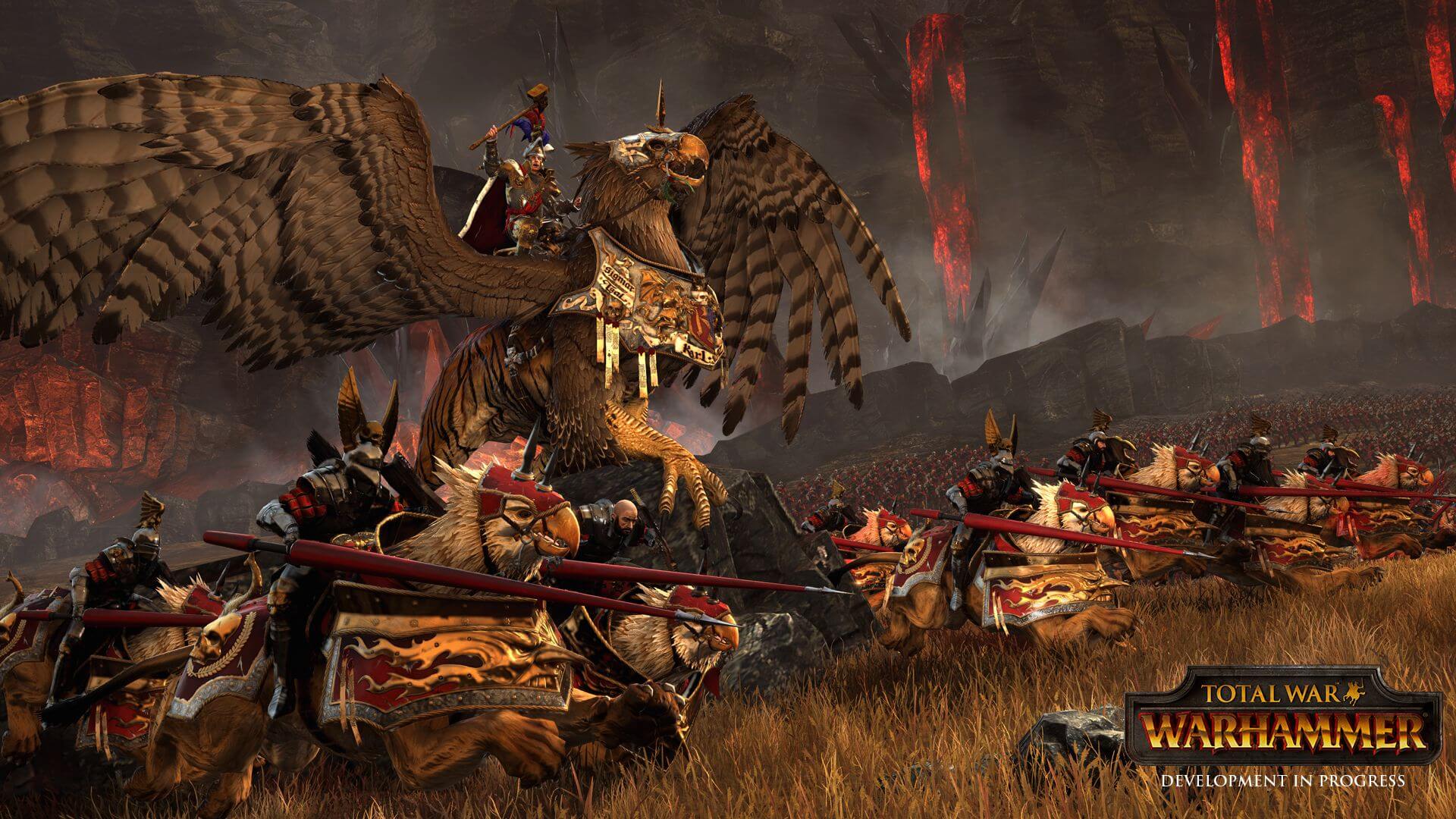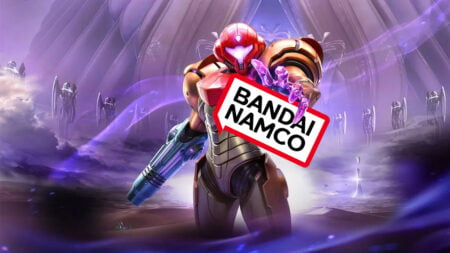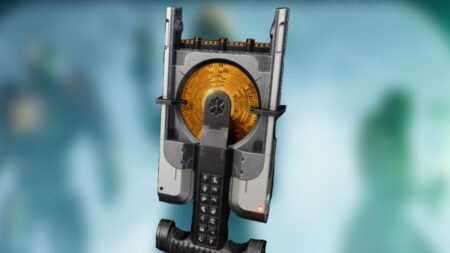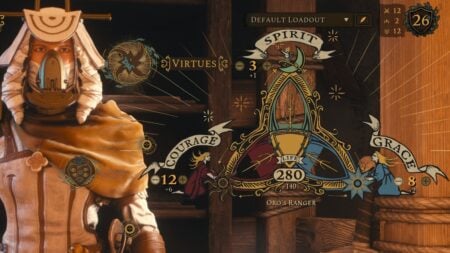Title: Total War: Warhammer
Available On: PC, Mac OS
Developer: Creative Assembly
Publisher: Sega
Genre: Action/Strategy
Official Site: https://www.totalwar.com/product/total-war-warhammer
Release Date: 24 May 2016
Where To Buy: Steam
Price: $59.99
What do you get when you cross a classic tabletop fantasy game and a franchise that creates in-depth battles based on historical events? You get Total War: Warhammer of course! Total War…Warhammer…Total Warhammer. It totally should have been Total Warhammer. That’s what I would have called it but moving on…

For the purpose of this review, I’m going to try and keep it as jargon free as possible, but here’s the skinny for those not in the know: The playable races in the game consist of the Human Empire, Vampire Counts, Greenskins (Orcs) and the Dwarves. Each race has (at present) two generals which you can choose one to begin the campaign with. The game is played out in 2 stages, the overview world map, and the battlefield map. The idea is that you build up your forces and battle against the AI, in contention of the land surrounding your domain.
So for those of you who have never played a Total War game thinking “can I get into this?” the answer is yes you can. The tutorial for this game does a reasonable job of getting the player to win their first couple of battles and teaches you how to manage your territory, for example; how to build in your settlements and what public order is.
Whilst I felt the tutorial taught me everything I needed to know for that point in the game, there was still plenty of options that aren’t explored at all such as how to recruit agents or how to muster another army. I had to find out the hard way what consequences would befall my empire if I declare war on a neighboring faction. The tutorial teaches the basics of how to play the game, and the rest is either up to the player to learn by trial and error or to utilize the in-game encyclopedia for help.
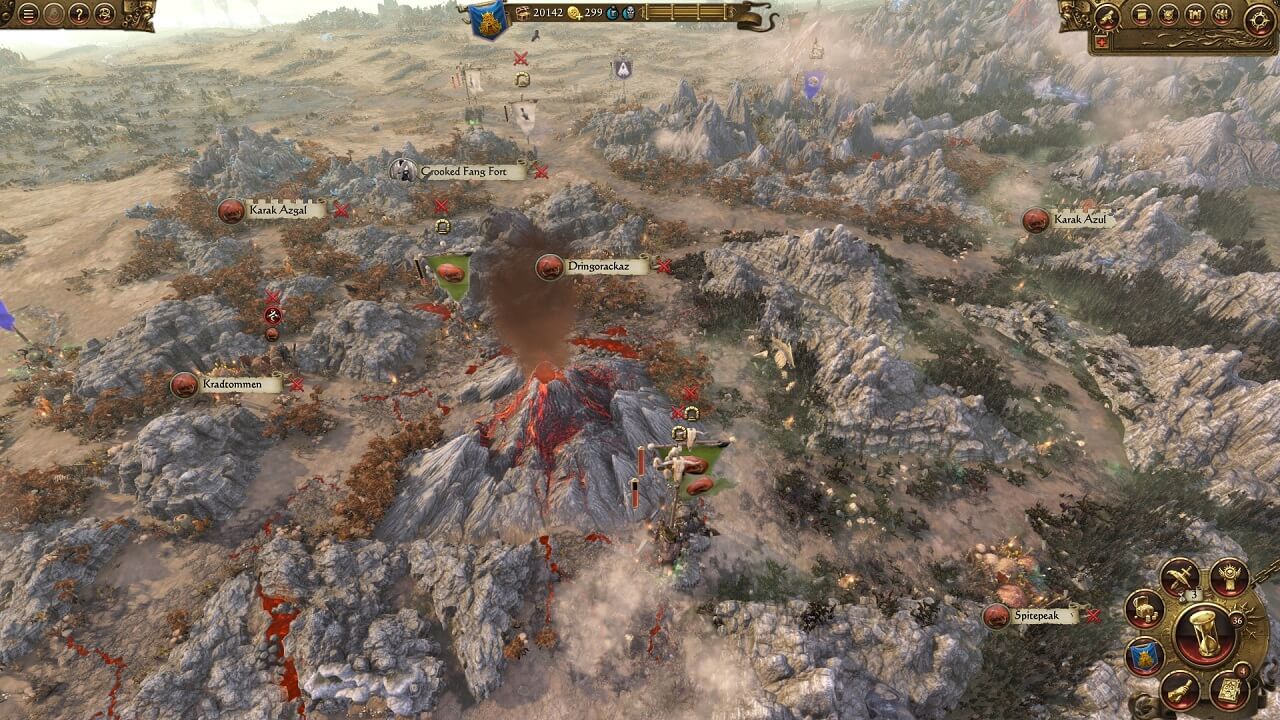
Veterans of the Total War franchise will be pleased to learn that the combat AI has been drastically improved. No longer will enemy forces run suicidal into your fully garrisoned cities. No longer will enemies try and take on your 3 stacks of armies with their 5 units. And thankfully, no longer will the enemy just sit around getting shot from range hoping you’ll run out of ammunition. Yes, there are still some glaring issues around the combat AI, such as the fact that an opponent will not try to retreat until it’s too late, but it is a huge improvement over Rome II & Attila.
Another great asset for the game is how well it runs. It is very well optimized, even for lower spec PC’s (such as my own) so even poor people like myself can actually enjoy the game. I’ve tweaked with the graphics settings and even on the top end settings, the game still runs very well with very little in the way of clipping or graphical lag.
Visually, this game has a lot going for it with a huge variety of different battlefield locations. You will venture between the foreboding wastelands, the paths in the mountains, near dwarven cities deep underground or in a rich green grassland. Depending on where the two engaging armies are stood on the overview map, you’ll (hopefully) never see the same map twice. Of course, this doesn’t apply to main quest battles which are usually fought at a fixed location depending on which faction you decide to play as.
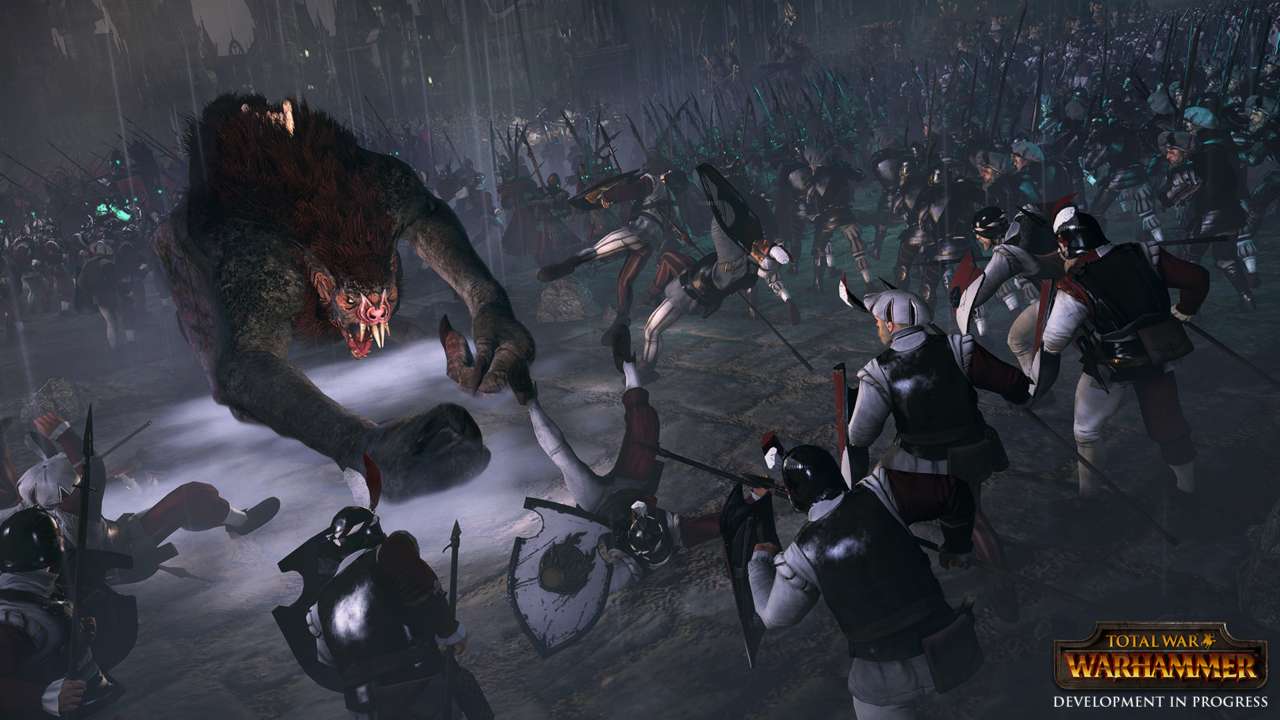
Speaking of quests and optional missions, they are not key to winning the game, but rather an incentive to carry out certain actions, i.e. 1000 gold if you attack a certain faction, 3000 gold if you recruit a new lord, a wizard if you win a battle against this general, etc. They can come in handy, but from experience, you won’t be able to complete them all as the game tends to set unrealistic targets for timed missions when you are supposed to attack a certain faction on the other side of the map within 6 turns.
Focusing on your own domain should always take priority over completing quests, since completing a quest will only benefit you short term, whereas boosting your overall economy by building a weaving house in every town will benefit you long term.
The core gameplay of Total War: Warhammer is centered around the huge set piece battles that you will no doubt create for yourself, building cities and castles to defend your territory, maintaining armies and negotiating through diplomacy. One of my biggest issues in previous games was the lack of intense battles created in the campaign, but this problem has largely been rectified by making the map smaller than that of Rome where the map was just too large for any force to have any real impact on events.

The world map in Total War: Warhammer is not by any means “small”, but it feels far more compact than say a map of Europe and it’s surrounding vicinity. Having a smaller map means that the space in which events take place are more significant, as was the case in Shogun 2, where the world map was literally Japan, and that’s it. Any major battles that occur feel local to you, so affect you far more directly, even if it’s just your neighbor who refused a trade agreement with you having their castle razed by the Vampire Counts.
Most of your time will be spent on the overview map. However, when you reach your target and begin the siege against a horde of filthy green skins, or the last bastion of mankind as they cower behind their walls, you will feel an immense sense of satisfaction destroying everything they have built up over the course of the game with your superior siege weapons.
The game also feels rewarding when you win a battle against the odds, where you are outnumbered and still come out victorious over your enemy using the environment and tactics to your advantage. Quite often, in fact, you’ll find the enemy AI only tends to attack with full stacks of troops so they can easily outnumber an under prepared defender.
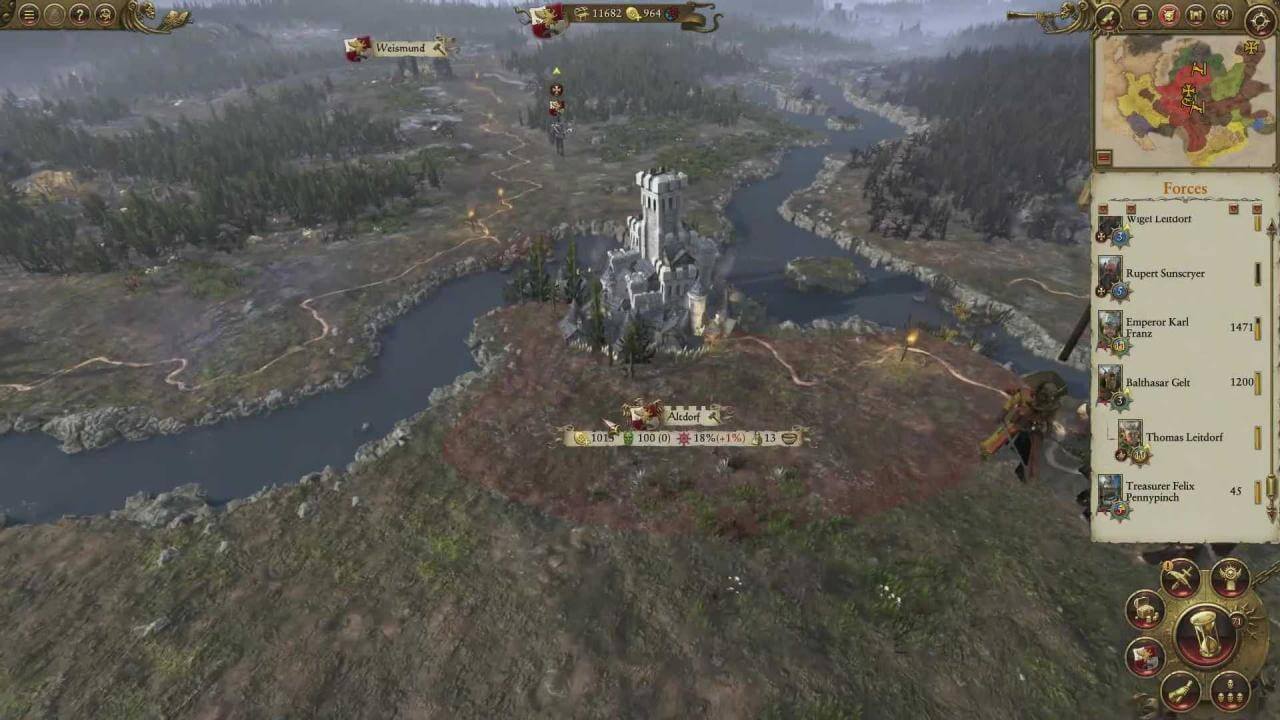
The old “civil war” mechanism has been removed and thankfully the realm divide factor has also been changed out for a more interesting style of mid-game event. Instead of half your territories rebelling, or the rest of the map suddenly hating you and declaring war at the same time, the armies of Chaos ride down from the north and the east, razing everything in their path.
If you have a friend who also owns the game, you can play a co-op campaign with them to enjoy the game even more. I personally welcome the fact that I can play Total War: Warhammer with a friend since it added so much more hours for me in Shogun 2. There isn’t much of a difference in events from the single player, but it does make for a far more interesting experience, since you will be able to control more areas of the map, rather than having to forge alliances or raze towns you cannot occupy.
The one sour taste left in my mouth was the way the proposed DLC was implemented, which was free as a pre-order bonus. What was the DLC you ask? Well, it was an entire faction, probably the most important faction in the game! The Chaos Warriors, which this entire narrative is based around.
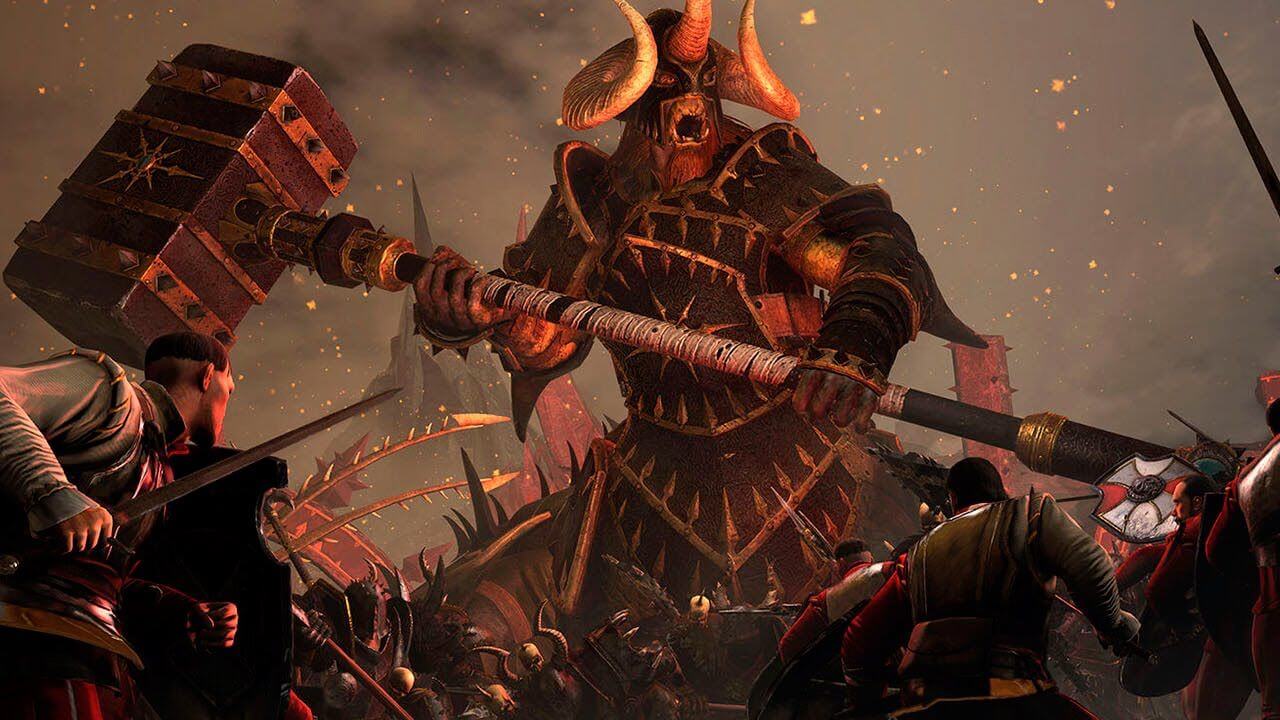
I was amazed to see Sega make this move (Sparta anyone?), which in all fairness, they did extend the offer out to “you get the DLC if you buy the game within the first week of launch”. Even so, the Chaos Warriors are a key faction in the game and are 1 of only 5 playable factions, which really isn’t a lot in comparison to previous games.
Let me sum that up: if you are buying the game today, you only get 4 factions to choose from, which for me is not a deal breaker since the campaigns are of a decent length, so I guess the old argument when it comes to quality over quantity arises. I suppose I’m happier to have 4 really good campaigns over 10 really mediocre ones.
Warhammer and Total War seem like a match made in heaven, so the big question I had to ask before its release was “Why did it take so long for this to happen?” A major factor when you have two different IP’s coming together is that you can sometimes lose some of the charm or characters that made that IP special. You have to get crossovers done exactly right otherwise you just end up letting down consumers from one camp or the other, or in some cases both. With that being said, I’m happy to report that Total Warhammer is not a product that disappoints.

- Gameplay: Lead your troops on a turn-based overview map and route your enemies in real time battles. Manage your kingdom. Be the armchair general of a fantasy world.
- Graphics: Visually beautiful with a huge variety of locations, well-animated troops, and the battle animations are worth watching, despite giving you a tactical disadvantage doing so.
- Sound: Good soundtrack adds to an epic fantasy feel. Creates the atmosphere.
- Presentation: Fantasy world that is very respectful of the Games Workshop franchise.
[review]

